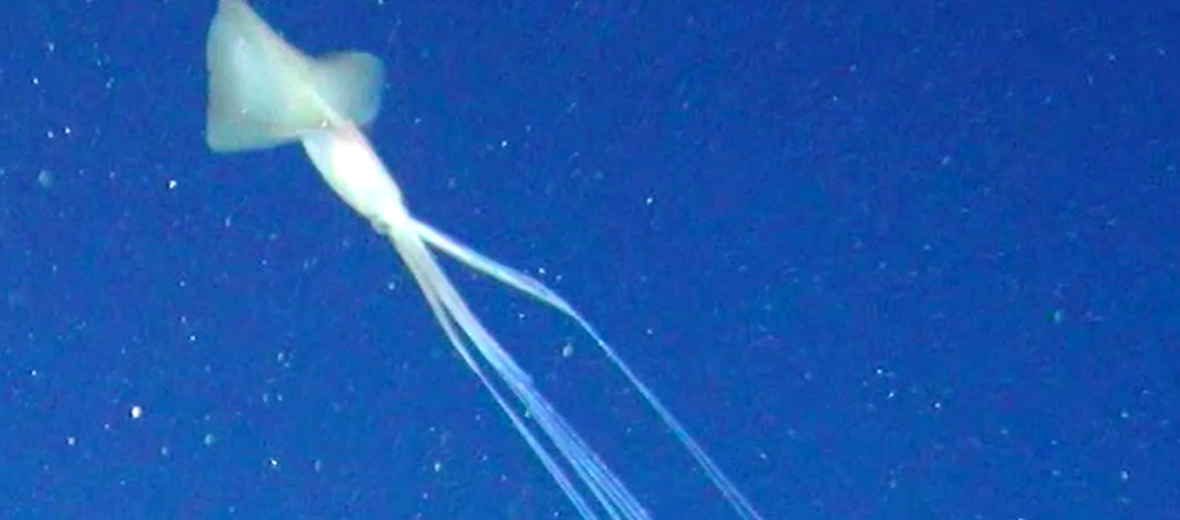
Found in the deep waters of the Pacific and Atlantic oceans the bigfin squid is an elusive creature of the deep. These creatures were first sighted back in September of 1988 at a depth of over 15,535 feet! They have extremely long tentacles and 2 huge fins that extend from their mantel (head); hence their namesake. Very little is known about these unique creatures so this is a short article. Hopefully more will be discovered about these elusive critters and when more is found out, more will be added to this article. This is on special request from R. Phillips.
First the Stats…
Scientific name: Magnapinna
Weight: Unknown
Length: Up to 26+ feet (including tentacles)
Lifespan: Unknown
Now on to the Facts!
1.) The appendages are held perpendicular to the body, which creates the appearance of odd looking elbows.
2.) What is really cool is the length of the elastic tentacles, that can stretch up to 15 – 20 times the mantle (head) length.
3.) It is believed, though not yet studied, that they prey on fish and crustaceans.
4.) They most likely use their tentacles to ensnare prey and then hold the prey as they eat with a sharp beak.
5.) Like other squids, it is believed that their life expectancy is approximately 1 year. But that hasn’t bee proven yet. Most cephalopods have a short life expectancy though.
But wait, there’s more on the bigfin squid!
6.) As with most other sea life, these cephalopods are at risk due to pollution, overfishing, and habitat destruction.
7.) Even though it has not yet been observed, it is presumed that these squids have the ability to jet out ink as a deterrent to predators as they dart away backwards to safety.
Did you know…?
The bigfin squid uses pigmented skin cells called chromatophores to change colors and patterns. Certain patterns and colors can be used by the male and female during mating to attract one another.
8.) Typical of other squids, females lay a few hundred egg pods that grow rapidly (up to 6% per day)!
Now a Short Bigfin Squid Video!
Also, check out the Critter Science YouTube channel. Videos added frequently!
Want to suggest a critter for me to write about? Let me know here.



